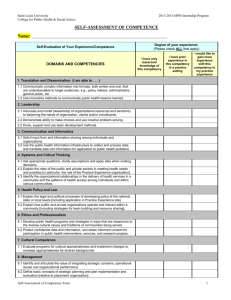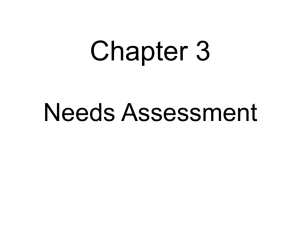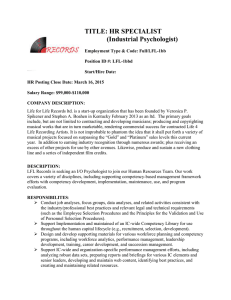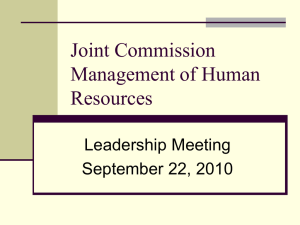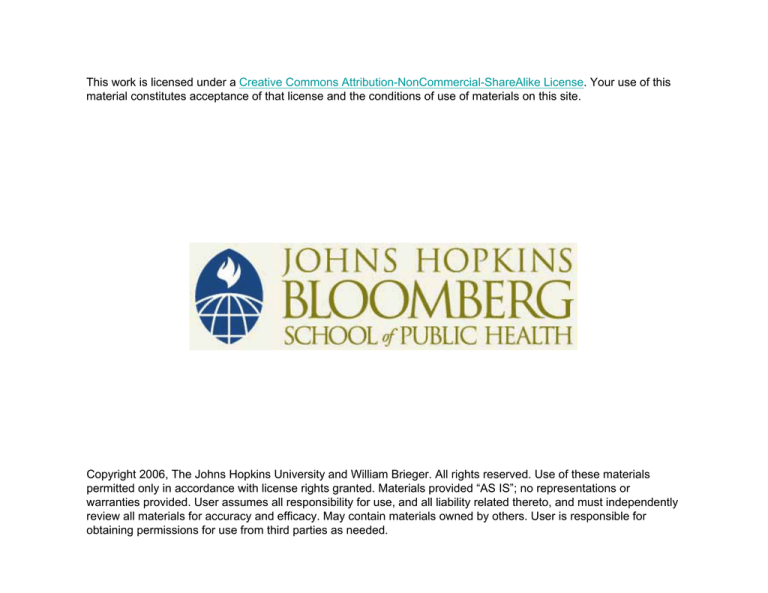
This work is licensed under a Creative Commons Attribution-NonCommercial-ShareAlike License. Your use of this
material constitutes acceptance of that license and the conditions of use of materials on this site.
Copyright 2006, The Johns Hopkins University and William Brieger. All rights reserved. Use of these materials
permitted only in accordance with license rights granted. Materials provided “AS IS”; no representations or
warranties provided. User assumes all responsibility for use, and all liability related thereto, and must independently
review all materials for accuracy and efficacy. May contain materials owned by others. User is responsible for
obtaining permissions for use from third parties as needed.
Community Efficacy
and Competence
William R. Brieger, MPH, CHES, DrPh
Johns Hopkins University
1
Collective Efficacy
A Third Framework for Understanding
Communities
Ù Social control
– Enforcing norms
Ù Cohesion
– Social interaction
Continued
2
Collective Efficacy
Ù Identity
– Sense of belonging
Ù Serves as an indicator of
– Levels of violence
– Commitment to community action
– Inter-group relations
3
Efficacy Scores
At the Lower End of the Scores
Ù Ajegunle — 42
– People in this community know
each other well but do not
cooperate
– One should not trust people in this
community
Continued
4
Efficacy Scores
At the Lower End of the Scores
Ù Lagos Island — 42
– No quick action, and islanders want
quick action for them to be mostly
interested
– The most terrible and sensitive
– Rely on cost-benefit efforts
5
Higher Efficacy Scores
Ù Mushin — 47
Ù Surulere — 45
Ù Results seen:
– More outreach to community
resources and beyond
– Higher perception of good
organizational functioning
– Greater success at fundraising
efforts
6
Community Competency:
A Fourth Framework
Ù Community organization increases the
problem-solving capacity of a group
– Making them less vulnerable to
outside manipulation in future
encounters (Ross, 1955)
7
Community Competency
Ù In a competent community, members
– Collaborate effectively in identifying
the problems/needs of the community
– Achieve a working consensus on
goals and priorities
– Agree on ways and means to
implement the agreed-upon goals
– Collaborate effectively in the
required actions (Cotrell, 1976)
8
Social Change Component
of Competency
Ù
Ù
Ù
Ù
Cultural values influence —
Social control which determines —
Levels of community participation —
And enhances community
capacity/competence —
Ù Resulting in community development
outcomes
9
Individual Change Component
of Competency
Ù Perceived risks and benefits lead to —
Ù Intentions to take health actions such
that —
Ù People engage in health-seeking
behavior —
Ù And sustain these behaviors —
Ù Resulting in health outcomes
10
Mediating Influences
to Competency
Ù Social support networks provide
context for —
Ù Social interaction and organizational
development, which leads to —
Ù Organizational competence and
capacity
11
Community Change
Ù Goals
– Strengthen basic characteristics
– Enhance collective efficacy
– Enhance community competence
12
Community Competency
An Interaction Between Social Change and Individual
Change
Ù Change approaches and theories at
community level
– Adaptive
– Conflict
– External driven
– Internal driven
– Reactive
– Proactive
Continued 13
Community Competency
An Interaction Between Social Change and Individual
Change
Ù Social change moves from
– Examination of community values
– Community participation in
directing change
– Building community
capacity/competence
– Resulting in community
development outcomes
14
Community Competency
Ù Individual change moves from
– Perceptions of risk and benefit
– Intention to take health actions
– Trial of health-seeking behaviors
– Maintenance of these behaviors
– Resulting in health outcomes
Continued 15
Community Competency
Ù The inter-relationship between
individual and community change
Ù Mediated by social support networks
Ù Social interaction with organizations
and institutions
Ù Resulting in organizational/social
group capacity to address health and
development problems
Continued 16
Community Competency
Social Change
Cultural
Values
Social Community
Control Participation
Social
Support
Networks
Perceived
Risks &
Benefits
Social Interaction
with
Organizational
Structures
Intention to
Take Health
Actions
Individual Change
Community
Capacity/
Competence
Development
Outcomes
Organizational
Competence/
Capacity
Engaging
in Health
Seeking
Behavior
Sustaining
Healthy
Behavior
Health
Outcomes
17
A Competent Community
Can Survive Disasters
Ù Oxfam worked on community
organization in Central America during
the 1980s
Ù Local associations grew
Ù After Hurricane Mitch, these
associations went into action
Continued 18
A Competent Community
Can Survive Disasters
Ù Committees were formed, decisions
were made
Ù Urgent needs were met, daily selfevaluations were made
Ù There was a strong sense of
responsibility for neighbors
19


